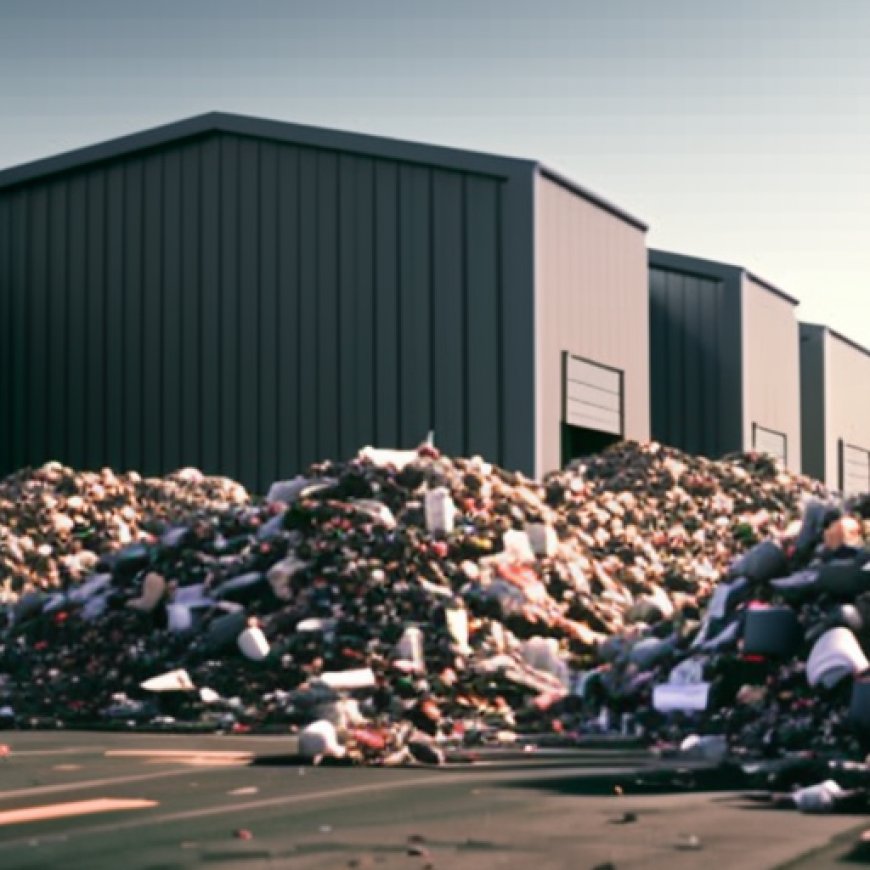Lane County says proposed waste processing facility could divert 80,000 tons of trash
Waste processing facility would divert trash, raise garbage rates The Register-Guard


Lane County Waste Management Facility Proposal

A proposed waste management facility to process residential garbage, commingled recycling, and organic waste before sending it to the Short Mountain Landfill would divert more than 80,000 tons of trash a year from the landfill, according to Lane County.
But some residents and businesses who use the landfill contend the cost of the proposed facility is too steep and would hurt them due to increased garbage rates.
The Short Mountain Landfill is the only landfill in Lane County. County staff said they believe the proposed Material and Energy Recovery Facility would not only preserve the life of the landfill but reduce its carbon footprint.
Lane County Waste Diversion
In 2015, the Oregon Legislature passed Senate Bill 263, which directed counties to set goals for garbage diversion rates, the portion of waste that doesn’t go into a landfill. Lane County commissioners set a goal of 63%.
In the time since, the county’s diversion rate dropped from 59.1% in 2014 to 49.7% in 2021 according to Department of Environmental Quality data.
Part of this difference is because SB 263 changed the state formula that previously awarded credits for having waste prevention, reuse, and composting programs. Applying the current formula to 2014 gives Lane County a 53.1% diversion rate for that year.
Integrated Material and Energy Recovery Facility
In 2022, Lane County issued a request for proposals for ways to increase the amount of garbage diverted from the landfill and has been advancing with a bid from Eugene-based waste processor Bulk Handling Systems.
The proposed facility would be located in Goshen next to a trucking site for logging company Weyerhaeuser and M&N Electric Motor Repairs and Sales.
Lane County and BHS said the facility would allow the county to:
- SDGs, Targets, and Indicators
-
SDG 11: Sustainable Cities and Communities
- Target 11.6: By 2030, reduce the adverse per capita environmental impact of cities, including by paying special attention to air quality and municipal and other waste management.
- Indicator 11.6.1: Proportion of urban solid waste regularly collected and with adequate final discharge out of total urban solid waste generated, by cities.
-
SDG 12: Responsible Consumption and Production
- Target 12.4: By 2020, achieve the environmentally sound management of chemicals and all wastes throughout their life cycle, in accordance with agreed international frameworks, and significantly reduce their release to air, water, and soil in order to minimize their adverse impacts on human health and the environment.
- Indicator 12.4.1: Number of parties to international multilateral environmental agreements on hazardous waste, and other chemicals that meet their commitments and obligations in transmitting information as required by each relevant agreement.
-
SDG 13: Climate Action
- Target 13.2: Integrate climate change measures into national policies, strategies, and planning.
- Indicator 13.2.1: Number of countries that have communicated the strengthening of institutional, systemic, and individual capacity-building to implement adaptation, mitigation, and technology transfer, and development actions.
Table: SDGs, Targets, and Indicators
SDGs Targets Indicators SDG 11: Sustainable Cities and Communities Target 11.6: By 2030, reduce the adverse per capita environmental impact of cities, including by paying special attention to air quality and municipal and other waste management. Indicator 11.6.1: Proportion of urban solid waste regularly collected and with adequate final discharge out of total urban solid waste generated, by cities. SDG 12: Responsible Consumption and Production Target 12.4: By 2020, achieve the environmentally sound management of chemicals and all wastes throughout their life cycle, in accordance with agreed international frameworks, and significantly reduce their release to air, water, and soil in order to minimize their adverse impacts on human health and the environment. Indicator 12.4.1: Number of parties to international multilateral environmental agreements on hazardous waste, and other chemicals that meet their commitments and obligations in transmitting information as required by each relevant agreement. SDG 13: Climate Action Target 13.2: Integrate climate change measures into national policies, strategies, and planning. Indicator 13.2.1: Number of countries that have communicated the strengthening of institutional, systemic, and individual capacity-building to implement adaptation, mitigation, and technology transfer, and development actions. Behold! This splendid article springs forth from the wellspring of knowledge, shaped by a wondrous proprietary AI technology that delved into a vast ocean of data, illuminating the path towards the Sustainable Development Goals. Remember that all rights are reserved by SDG Investors LLC, empowering us to champion progress together.
Source: registerguard.com
-

Join us, as fellow seekers of change, on a transformative journey at https://sdgtalks.ai/welcome, where you can become a member and actively contribute to shaping a brighter future.









